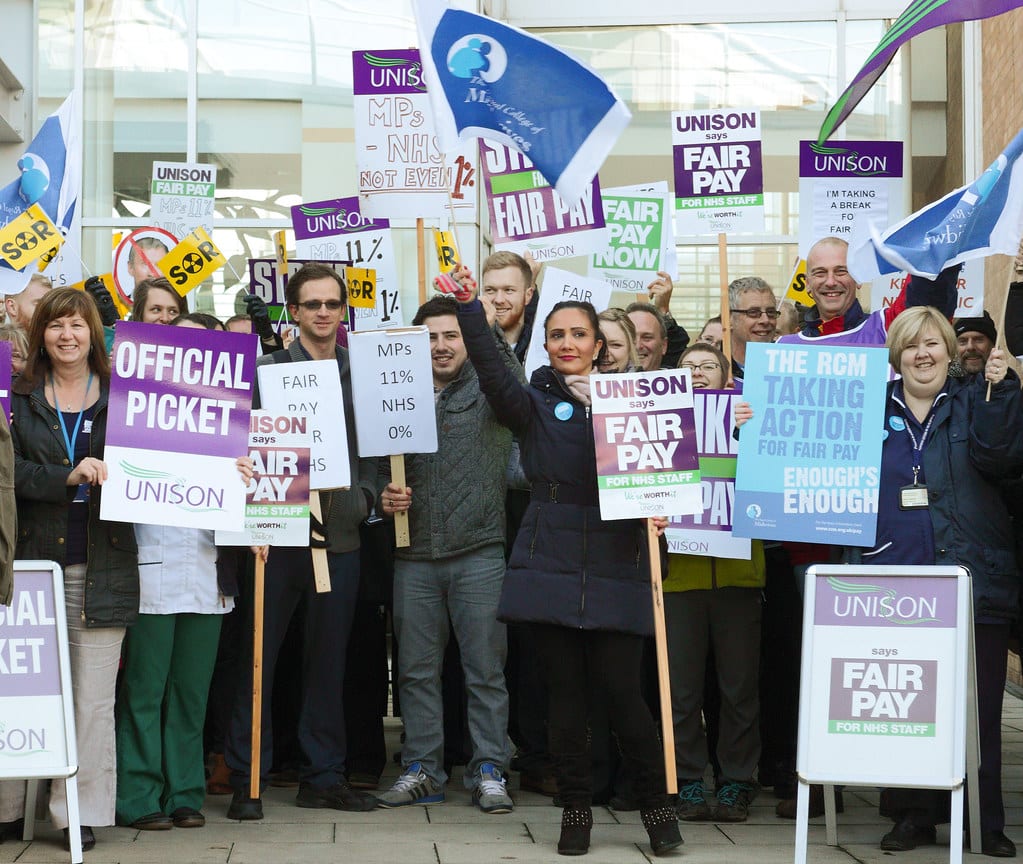In a significant demonstration of dissatisfaction, an estimated 150,000 public sector workers in Northern Ireland participated in a strike on January 16, marking the largest industrial action in over five decades. The strike, orchestrated by 16 trade unions, was a culmination of the longstanding dispute over pay and working conditions.
Official figures reveal a concerning trend in the real pay of Northern Ireland’s public sector employees. Between April 2022 and April 2023, there was a 7.2% decline in real pay, exacerbating the existing 4% fall from the preceding year. This decline follows two decades without any growth in public sector real pay, underlining the persistent challenges faced by workers.
A noteworthy issue contributing to the discontent is the substantial pay gap between public sector employees in Northern Ireland and the rest of the UK. For instance, newly qualified teachers in Great Britain commence their careers with a salary of £30,000, whereas their counterparts in Northern Ireland start at £24,000. Similarly, a newly qualified doctor in Northern Ireland earns £26,000, considerably less than the starting rates in England (£32,000) and Scotland (£31,000).
The demand for increased pay is intricately linked to the broader economic and political challenges facing Northern Ireland. The austerity measures implemented by the UK government from 2010 to 2019, marked by 1% pay caps on public sector pay increases, have left an indelible impact on public services. Schools are grappling with financial constraints, and NHS figures from 2023 highlight substantial waiting times for surgeries and consultations, raising concerns about the strain on healthcare workers.
Recruitment has become a mounting challenge, particularly in education and health sectors, exacerbating existing workforce issues. These challenges are magnified in Northern Ireland, where public sector workers constitute a larger proportion of the workforce than in the rest of the UK. The recent surge in inflation and rising interest rates has only compounded the difficulties faced by workers.
Political Turmoil Adds to the Woes
The strike takes place against the backdrop of an ongoing political crisis in Northern Ireland. The collapse of the devolved administration, the Northern Ireland executive, in February 2022 has left the region in a political stalemate. The power-sharing arrangement, unique to Stormont, allows either nationalists or unionists to obstruct the formation of a functioning executive. In this case, the Democratic Unionist Party (DUP) withdrew over post-Brexit trade agreements and has refused to return until its concerns are addressed.
The absence of an executive further complicates matters for public sector workers, as pay is a devolved matter within the constraints of Treasury funding. The executive, if in place, would receive guidance from pay review bodies and set policies for negotiation with unions. However, the current lack of an executive hampers these crucial processes.
A more profound challenge arises from the inadequacies of the “Barnett Formula,” the mechanism by which the UK Treasury allocates funds to support public spending across devolved regions. Unions argue that the formula fails to meet Northern Ireland’s public expenditure needs.
To address the budgetary vacuum resulting from the executive’s collapse, the UK’s Northern Ireland secretary, Chris Heaton-Harris, set the budget for 2023-24. However, there is a prevailing perception in Northern Ireland that this budget, viewed as a “punishment budget,” is designed to coerce the DUP back into government. The budget demands repayment of past overspends to the Treasury, coupled with inflation, translating into real-term cuts for education, healthcare, justice, and the economy.
Heaton-Harris has expressed a willingness to address the situation if the executive is reinstated, offering £3.3 billion, including funds for public sector pay awards. Unions have called for the release of this money, but the impasse continues as the DUP remains reluctant to reenter government until their concerns are met.
Uncertain Future for Unions
As of the latest reports, some unions remain on strike, others have pledged further action, and there is speculation about potential civil disobedience. The longevity of union actions appears contingent on the evolving political agenda, which remains uncertain in the short term. The region faces a confluence of economic and political challenges, suggesting that even if funds are made available, they may offer only temporary relief.
In conclusion, the historic strike in Northern Ireland highlights the deep-seated issues surrounding public sector pay, exacerbated by political turmoil and inadequate funding mechanisms. The future trajectory of the unions’ actions hinges on resolving the complex interplay of economic and political challenges facing the region. As the strike persists, the eyes of the nation are on Northern Ireland, awaiting developments that could reshape the landscape of public sector employment and government policies in the region.

